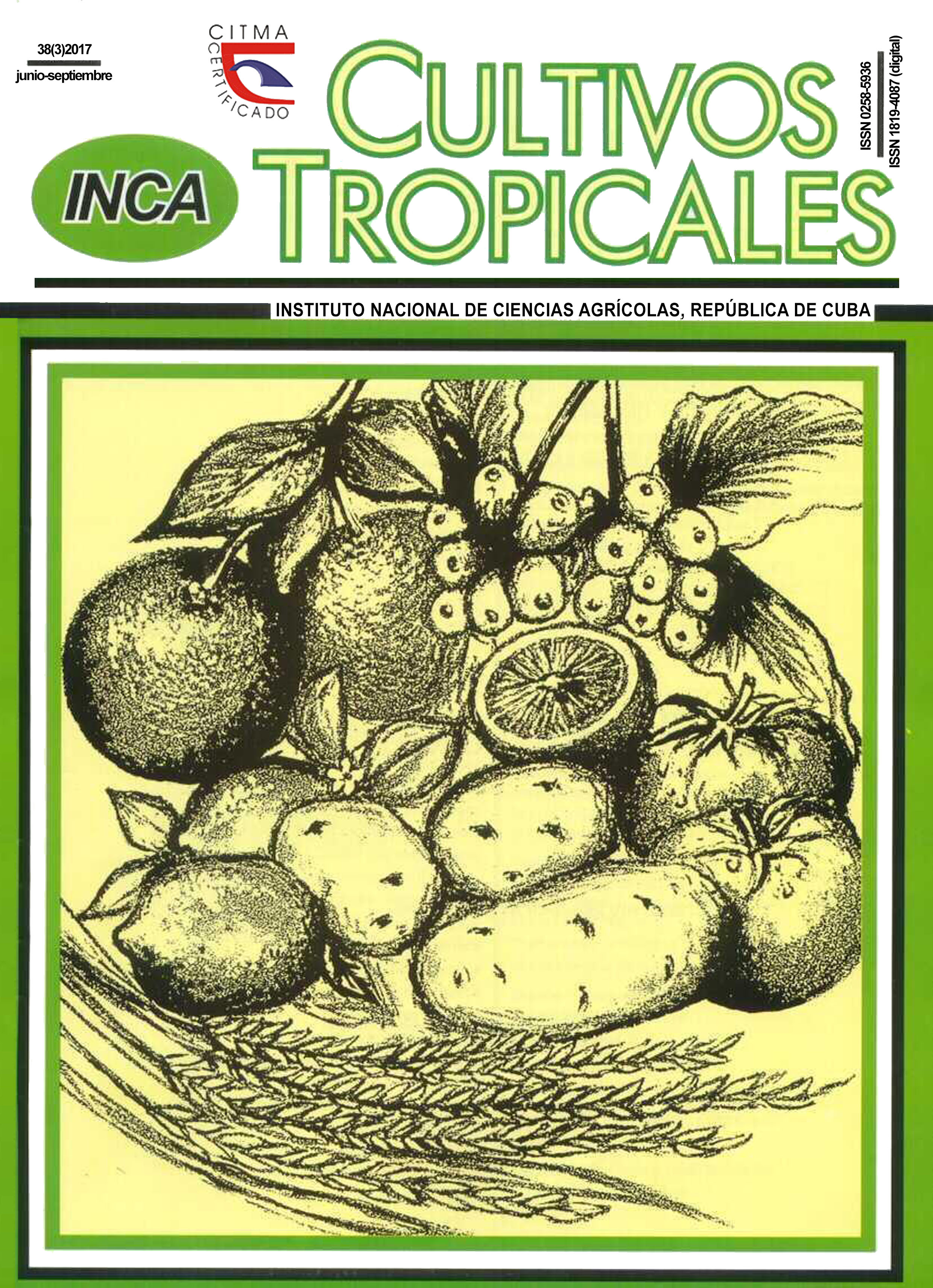Inoculation of arbuscular mycorhizal fungi (AMF) and Brown soil-organic fertilizers ratio in the acclimatization of banana vitroplants
Main Article Content
Abstract
From the feasibility and benefits of inoculation of efficient strains of arbuscular mycorrhizal fungi in different cultures and mycotrophic character of bananas, this work was establish ratio soil: compost optimal ratios (S:AO, according its acronyms in English) for effective mycorrhization in the acclimatization phase of in vitro banana plants of banana cv. ‘FHIA-18’ (AAAB) in Fluffy brown carbonated soil. Four AMF strains, two sources of organic fertilizers (vermicompost and compost) and five S:AO ratio: 100 % soil, 3:1, 1:1, 1: 3 and 100 % AO were studied, using a Completely Randomized design. The experiment was performed in bags of 0,5 kg and it was repeated twice and in any of the ratio studied. The pH ranged between 7,3 and 7,8. A positive and reproducible response to Rhizoglomus intraradices (INCAM-11) inoculation were found after two years on growth, nutritional status, survival and mycorrhizal plant functioning with a significantly higher performance than other AMF inoculated strains. Also, the effects were dependent of the ratio S:AO, being obtained the biggest benefits in presence of the relationships 1:1 and 1:3, inferior quantities of AO limited the operation mycorrhizal and superiors inhibited it. No differences were found between AO sources studied. The use of R. intraradices (INCAM-11)straim in presence of the ratio 1:1 S:AO diminished in 50 % the content of AO of the effective recommendation for the acclimatization of banana vitroplants.
Article Details
Those authors who have publications with this journal accept the following terms of the License Attribution-NonCommercial 4.0 International (CC BY-NC 4.0):
You are free to:
- Share — copy and redistribute the material in any medium or format
- Adapt — remix, transform, and build upon the material
The licensor cannot revoke these freedoms as long as you follow the license terms.
Under the following terms:
- Attribution — You must give appropriate credit, provide a link to the license, and indicate if changes were made. You may do so in any reasonable manner, but not in any way that suggests the licensor endorses you or your use.
- NonCommercial — You may not use the material for commercial purposes.
- No additional restrictions — You may not apply legal terms or technological measures that legally restrict others from doing anything the license permits.
The journal is not responsible for the opinions and concepts expressed in the works, they are the sole responsibility of the authors. The Editor, with the assistance of the Editorial Committee, reserves the right to suggest or request advisable or necessary modifications. They are accepted to publish original scientific papers, research results of interest that have not been published or sent to another journal for the same purpose.
The mention of trademarks of equipment, instruments or specific materials is for identification purposes, and there is no promotional commitment in relation to them, neither by the authors nor by the publisher.
